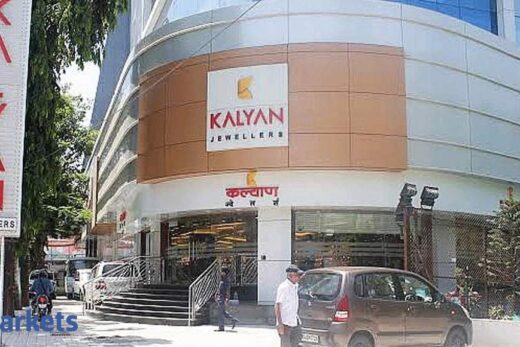Demonetisation started on November 8, five years ago. That definitely gave a boost to digital payments like Paytm. Today, your IPO was launched. Is that a coincidence?
Madhur Deora: It is quite a coincidence. One does not really control the timelines. These happen only when you get regulatory approvals to go ahead with your IPO. It is a happy coincidence that for hundreds of millions of Indians and tens of millions of shopkeepers, November 8, 2016 was the day when it became a household name in some ways. We have seen a large number of users before but that was the time when digital payments awareness got created on a mass scale in India. So to come out on the 5th anniversary of that day is quite a happy coincidence.
It is a big day for us, it is a big day for tens of thousands of people who have contributed to what Paytm is today along the way. It is a big day for all of us and it is very exciting that we are finally taking the step and we are very excited that we are doing this in India. There is a lot for us to be a part of the Indian fabric, which is to be listed on Indian stock exchanges that just really gives us a lot of joy and pride.
You are looking for India’s biggest IPO but with IPO will come a lot of responsibility which you are not used to at the moment. One of the expectations could be the need for Paytm to carry on cleaning up its balance sheet and the need for Paytm to deliver a profit. Are you up to the challenge?
We have been working on getting our systems upgraded. It is an ongoing exercise; it is not something that starts three months before the IPOs or something that ends on the day of the IPO. It is something that we have been working hard on for many years.
Paytm has had a big four auditor for 13 years since 2008. A lot of folks will be surprised to know that since we were a much, much smaller company, why did you have a big four auditor? We have had great shareholders who demand very high levels of governance. We have great independent directors. It is something that we have been quite focussed on for many years. Of course with IPO, comes additional responsibilities of timely disclosures to our millions of shareholders. But we are up to that challenge and have been working hard to make sure that we can comply with all of that.
Paytm has already raised about Rs 8,300 crore from anchor investors and these are key investors like CPPI, Blackrock or GIC. That has taken care of 45% of the issue. In the last couple of IPOs, retail investors have been struggling to get allocation but have you left enough value on the table for the IPO investors?
If I did not have the highest quality funds in the world and if we were doing this IPO on the back of folks who were just short term investors, then I would have sat back a little bit and said are we doing the right thing but to have the backing of some of the highest quality investors around the world in the anchor round, is one of the validations that the valuation is justified at least in the eyes of investors from around the world. That is how we look at it.
The markets will not wait impatiently for all these new age companies to turn profitable. You have been improving your unit economics but you have large ambitious plans as well. Can you give us any guidance when it comes to road towards profitability?
When it comes to revenue and path to profitability we have been able to demonstrate in the financials that we have put in the prospectus that we have come a long way from where we were two or three years ago and where the industry was two or three years ago. We have taken real leadership in that. That is all you can say in the context of a company which is seeking to go public and having a prospectus and forward looking statements and so on. But did Rs 245 crore of contribution profit in the last quarter alone. The year before that in the entire year, we did Rs 360 crore of contribution profit and if you go back two years before that, we were losing Rs 2,000 crore of contribution profit. That is what I am referring to as this journey of becoming a lot more efficient and moving towards profitability.
While there are certain type of investors who would only invest in companies which are profitable, one of the things that investors look at is whether you are making losses or profits but they also look at where are you investing that money, are you investing that money and is it giving you the kind of returns, kind of traction, kind of positive scale that they can look back and say okay this investment is justified.
Companies invest in capex all the time. It is just that we invest in opex, we do not build factories, we do not build roads and so on. Our investments show up above EBITDA. For a lot of companies, it does not show up above EBITDA but it shows up on the balance sheet. So I do not think investors mind companies making investments, in fact they want to allocate capital to companies that are making investments. What they focus on is that it is being spent thoughtfully and with high efficiency. This is where we spend money, this is where we monetise and we are very efficient about how we do it.
You have had marquee investors through the entire journey, especially the last five years from a Warren Buffett backed Berkshire Hathaway to Masa, SoftBank, even Jack Ma’s Alibaba. What has been the advice from the veterans that everybody looks up to as far as this IPO goes?
One of the big pieces of advice in general that we get is that India is a huge market and we should have very high conviction about what we are doing in India because of outcomes or what can get created in India if you paint yourself a big canvas. So if you say I am going to do payments and I am going to do consumer internet and I am going to do financial services, the market is enormous. If you are going to attack that market, then you can trade very large outcomes for ourselves.
So the big advice that we get is it is a huge market, very fast growing and you should have very high conviction about that and it is good to hear that not just from investors but also investors who have gone through this journey as entrepreneurs. That has been very positive I think in just creating the right mind frame at Paytm. The advice that we got with respect to the IPO is very similar to the advice that was embedded in your questions which is, are you guys ready? Do you have systems and disclosures in place? Finally, are you doing the right thing by your investors and by your retail investors?
We could have priced the IPO higher if we wanted to but we thought that this is the right balance for making sure that the investors who come in the Paytm IPO should be treated very fairly and this is where we were comfortable even though we could have priced the IPO higher and a part of that was the philosophy and advice from our directors both shareholder directors and independent directors.
What according to you, as the finance guy at 197, as the CFO overseeing the largest IPO in India, what are the top three parameters that the investor and analyst community need to look at?
I can only say that we are seeing really high quality investors because at the end of the day, that is what matters. It matters whether these investors, who have seen this journey play out in other countries, think that Paytm is at a certain stage in a cycle where it will create a huge amount of value going forward. Those investors are what we pay particular attention to. So they look at whether the market size is enormous. One of the very interesting things that is not talked about in the retail community is that India financial services has the largest market cap.
The private sector Indian financial services companies are valued at more than $500 billion. A lot of it got created in the last 20 years and it has been a fantastic story already. So, it is a huge market for the Indian financial services in the listed equity format. The second thing that they look at is what is the market position and we have mentioned the prospective hundreds of millions of users. We have tens of millions of merchants but we are just getting started. Our mission is to bring half a billion Indians to the mainstream economy.
We also think on the merchant side there is a massive opportunity ahead of us and the third is the company makes revenue and contribution profitable. It is not just about users, it is not just about scale, it is whether you make money. We have been able to show that payments in India can make money. We are the largest payments company in India in terms of revenue. So we have shown that we can make revenue over the last couple of years. We have shown that we can make contribution profit and as this contribution profit scales at some point in the future, it will be EBITDA profitable and cash flow profitable as well. We are well on our way but at the end of the day, that is how investors look at.
The competition is heating up. You are going to have competition not just from other fintech players but banks are getting their act together. Bill Gates famously stated in the 90s that we may not need banks, we need banking. That is certainly coming true. How will Paytm handle that kind of competition?
I will just break this into two parts: first is the fintech competition. Most of the fintech competition exists in the segment called UPI and people often misunderstand UPI to be equal to payments; UPI is one form of doing payments. There are many networks that exist and UPI is one network. There is a car network, Paytm obviously has its own payment instruments such as Paytm wallet, Paytm postpaid and so on.
So competition is in one of those segments. It happens to be a segment which has lower bit entry barriers and zero revenues right so while Paytm placed in that UPI segment for market share, our canvas is much bigger than doing just UPI. As a result of which we are able to grow very fast and have hundreds of millions of dollars of payments revenues and so on
We see them as partners because we are a technology company trying to offer financial services to customers and there are many banks. Not every bank necessarily wants to go to the market with the fintech partner like us but many would have seen our recent announcement with HDFC Bank. We already work with most of the large banks and most large NBFCs in the country and we see banks and financial institutions as partners because they can reach their customers more easily, particularly in areas like lending or asset management and so on.
That has worked really well for us and we see huge opportunities to cooperate. Of course there will be areas where we compete but that is the nature of innovation these days that two companies can compete in certain areas but also cooperate in other areas and we see banks very much like that.
Earlier this month, in pre-IPO research, Bernstein valued Paytm at $21-24 billion. In the same note they have also raised one red flag that there is a fear of regulators starting to treat fintechs like banks and regulations for capital adequacy ratios and others that govern banks could come. How closely are you following that up?
What that might have been referring to is a lending business and if you lend on your own balance sheet and if you are taking risk then you should have obligations to put some collateral aside for that. Paytm actually does not do that. Paytm works with banks and NBFCs and effectively creates or co-creates products that can be offered to our consumers and merchants. In those cases, the banks and NBFCs that we work with are already putting aside capital for that as per the regulations that govern them. So we are quite careful about not building business models that creates systemic risks and would make regulators uncomfortable.
There are other companies out there and I would not necessarily name them who would lend on their own balance sheet and or their partner with the bank and they give things like FLDGs and so on, which are slightly more problematic in my view. It does not matter eventually as it is only the regulator’s view that matters but what I was referring to is a lending business and we believe that we are following every rule. In fact, RBI came out last year with digital lending guidelines and digital outsourcing guidelines. We work with partners on the basis of those regulations and guidelines.
So you are saying that those that are looking to participate in the IPO or even buy shares in the secondary market, do not have to get worried about things like asset quality at a time when buy now pay later has become a global trend?
We should always worry about anything that becomes paid and has an asset quality issue and sometimes things go in cycles or sometimes people get carried away with that. But Paytm does not take risk on that. Of course, if certain segments of business that we do have collapsed and we are able to scale them, Paytm does not take the risk on its books. We work with partners who take the risk as per regulations.
We do not take balance sheet risk but we do work very closely with our partner to make sure that the lending that they do with Paytm is performing as well as it can.
I should just add to that that given the size of the opportunity in India and given the large customer base that we have, we are very careful about not being too adventurous about what sorts of customers should get access to and so on.
In the last quarter, we did 2.8 million loans which is a very significant number for a business which only started less than two years ago. But in the context of overall Paytm customer base, that is not a massive number. So we still try to be relatively careful about who gets access to loans and who has to be on the platform for longer in order to be eligible for loan.
What is going to be Paytm’s differentiator because if one goes on the app it is already like a super app?
We very much believe in super apps for the simple reason that a large number of customers do not want to download a different app for everything that they want to do, especially the things which are of medium to low frequency. We have had a version which can be called a super app almost since the beginning of Paytm and that has really helped us drive engagement by monetisation.
I think it is hard to comment on other folks strategies, but I would imagine Whatsapp to do some form of UPI payments which as I mentioned is one of the payment networks that exists in India and it is unclear to me from outside, what Amazon’s pay strategy is. I would rather not comment on each of them. But we do see UPI being something which is going to continue to be competitive because it has very low entry barriers.
With the new market share guidelines that are going to come in where the market share for each player is going to be capped, could Paytm turn out to be the biggest beneficiary?
UPI is going to remain competitive and one should not think of UPI as static. You should think of it as there are three players today and maybe two or three or five years from now there could be more players in some ways. I do not think there will be fewer players, the market share will fragment across more players but if market share for the largest players come down, whether they would come down in favour of some new player who decides to enter at that point of time or in favour of Paytm, I would not comment on that but there is an opportunity for us.
But UPI is fundamentally lower entry barrier so new players could get created, new platforms could get created within that. We think Paytm market share will be fine as we continue to develop other forms of payments so Paytm Wallet, Paytm Postpaid, the super app, the largest use cases and that is really where one can differentiate as a company and as an offering and that is where one can make revenues and profits.
When we look at Paytm, we have so many fintechs in the country that we cannot say that Paytm is the leader or this is monopolistic or duopolistic. What are your views on it because the lofty valuations have been justified by using that argument.
I do not want to necessarily comment on other companies because we are in an ecosystem and in various parts of our ecosystem, we would compete with other players and in other parts of our ecosystem we will be cooperating with a number of players. Fundamentally we started our lives as a payment company and we work with nearly every e-commerce company that is out there.
It is harder to box in that Paytm is a company that does this, this and this and these are their competitors and this, this and this. Our fundamental model is that we are a two-sided ecosystem of consumers and merchants for payments. Customers come in for payments. Merchants also come in for payments and we offer them more and more services that improve their experience. So if a customer comes in for UPI payments, maybe they have discovered Paytm Wallet, maybe they have discovered our commerce services, they have discovered our financial services and all of that will make their experience on the Paytm app better.
There will be many problems that we are solving and the same thing on the merchant side. We are pegged to what is growing in the internet ecosystem in India, what is it that the customers want to do online and lot of those services we can bring to those customers so that is how we think about our ecosystem and that is a static ecosystem. You can ask me, three years from now what could be a large use case on Paytm app? I could give you a few sort of thoughts but I could not tell you that that would exactly be the largest use case because that it is really very customer dependent. The thing that we have is a very large number of customers and merchants who are very highly engaged on Paytm and as a result give us very low CAC.



